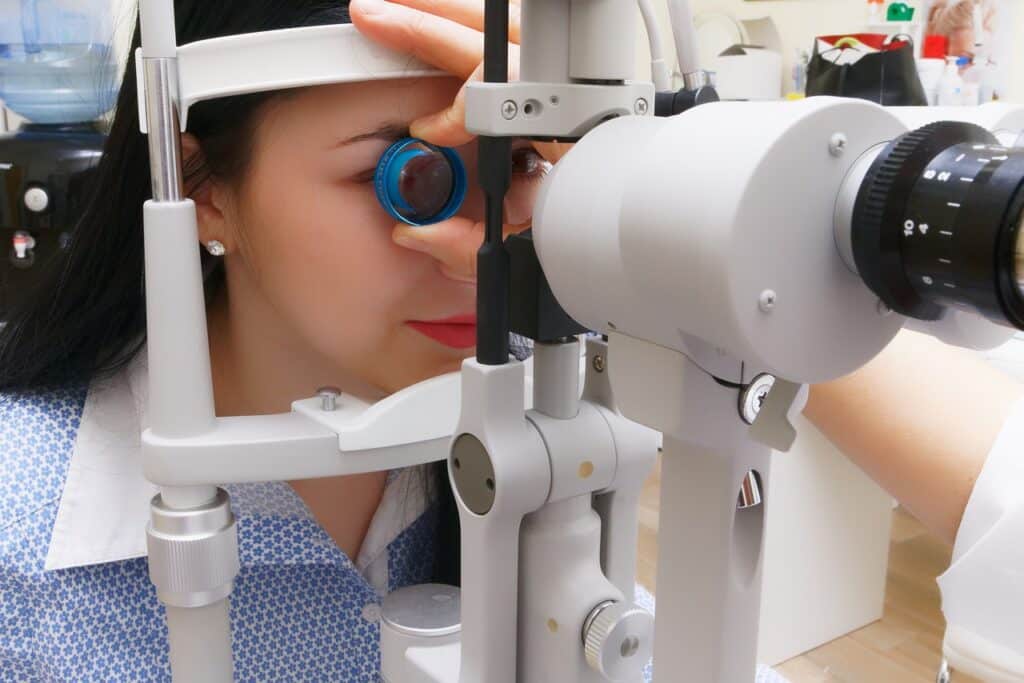Elmiron, a prescription drug approved by healthcare professionals for the treatment of pain and discomfort associated with interstitial cystitis, has been linked to vision problems and potential eye damage. Patients using the elmiron medication might experience side effects such as hair loss, bleeding, and vision issues like blurred vision and pigmentary maculopathy.
In 1996, Elmiron was approved for bladder pain associated with interstitial cystitis (IC). Manufactured by Janssen Pharmaceutical, this medication remains unique as there’s no generic version available.
Interstitial cystitis, also known as painful bladder syndrome, is a chronic bladder condition that affects millions of people, predominantly women. Elmiron is recommended after less invasive treatment options have been explored, such as lifestyle changes. Drs. Adam M. Hanif and Nieraj Jain’s study in 2019 indicated that a substantial number of Elmiron users are women, with hundreds of thousands having taken the drug.
What is Elmiron Used For?
Elmiron is a medication used to treat bladder pain caused by interstitial cystitis. However, it is not considered a pain medication. While it has similar effects to blood thinners, it’s not a blood thinner like Warfarin. Elmiron doesn’t cure IC, but it can manage it.
In a randomized, placebo-controlled study, 28 out of 74 patients who took Elmiron felt half as much pain in their bladder after three months.
Elmiron’s active ingredient is pentosan polysulfate sodium. The pill also has other ingredients that give it its color and shape, including FD&C Blue or FD&C Red.

How Does Elmiron Work?
Janssen Pharmaceutical, the company that manufactures Elmiron, isn’t exactly sure how it helps with bladder pain from interstitial cystitis. Experts believe Elmiron acts as a protective layer against the bladder wall, blocking harmful irritations in urine from aggravating the bladder cells.
Elmiron Side Effects
In a clinical trial with 2,499 interstitial cystitis patients, the most common side effects occurred in about 1% to 4% of participants.
Elmiron acts like a blood thinner, but it’s much weaker than medication like heparin. In a study of 128 people taking Elmiron, around eight of them (6.3%) had rectal bleeding problems.
Some of the most common side effects when taking Elmiron include:
- Hair loss – 4%
- Stomach issues, like diarrhea and nausea – 4% each
- Headaches – 3%
- Skin rashes – 3%
- Stomach pain – 2%
- Trouble with the liver – 1%
- Feeling dizzy – 1%
Other side effects occurred in fewer than 1% of patients. This included symptoms like vomiting, feeling gassy, anemia, constipation, light sensitivity, itchy skin, tinnitus, and vision problems, like pink eye and retinal hemorrhage.
Elmiron Dosing
Janssen Pharmaceutical suggests taking one 100 mg Elmiron pill three times per day (300 mg total). It’s best to take it with water on an empty stomach, either an hour before eating or two hours after a meal.
After taking Elmiron for three months, patients should check with their healthcare provider to see if their bladder pain or other symptoms have improved. If there’s no change, they can continue Elmiron use for another three months.
Doctors aren’t sure about the safety of using Elmiron for more than six months because it hasn’t been fully tested for effectiveness and safety in clinical trials.
Pregnant Women and Children
Elmiron hasn’t been tested on patients under the age of 16.
While animal studies haven’t shown that the drug can cause problems for infants or issues with fertility, doctors still warn pregnant women to be careful while taking an Elmiron prescription. It should only be used if the medical benefits outweigh the risks.
It’s also unclear if Elmiron is secreted through breast milk, so if a woman is breastfeeding, she will need to be extra cautious.
Retinal Pigmentary Changes
In mid 2020, Janssen Pharmaceutical added a warning about eye problems to Elmiron’s label. Chronic Elmiron exposure could lead to pigmentary maculopathy, a condition that causes retinal damage This can cause issues like trouble reading, blurry vision, struggling to see in dim light, and in extreme cases, vision loss.
Unfortunately, this eye damage is more than likely permanent. Even if someone stops using Elmiron, vision problems could keep getting worse.

Elmiron Lawsuit and Recalls
Elmiron hasn’t had a recall, but some recent studies between 2018 and 2020 found that it could cause serious vision problems. Some eye doctors believe that chronic exposure to Elmiron can lead to an eye disease called pigmentary maculopathy.
In June 2020, Janssen Pharmaceutical added a warning about this vision problem on Elmiron’s label. However, the U.S. Food and Drug Administration has not issued a statement or suggested taking Elmiron off the market at this time.
Some Elmiron users who had vision damage have filed Elmiron lawsuits against Janssen Pharmaceutical. They claim that Janssen knew about the vision risks, but didn’t tell patients or doctors. As of September 2020, there were about 50 Elmiron lawsuits, with many in Pennsylvania. Lawyers expect this to increase to 1,000 or more in the future.
If you’re an Elmiron patient who believes your vision damage was caused by taking the prescription medication, you will want to consult with an Elmiron attorney. They will perform a free case evaluation to determine whether your case meets the requirements to file an Elmiron lawsuit.
References
- https://www.accessdata.fda.gov/scripts/opdlisting/oopd/detailedIndex.cfm?cfgridkey=1784
- https://www.healio.com/ophthalmology/journals/osli/2019-10-50-10/%7B324bde2e-2389-4815-bf5e-fe3b2eb18062%7D/progressive-maculopathy-after-discontinuation-of-pentosan-polysulfate-sodium
- https://www.janssenlabels.com/package-insert/product-monograph/prescribing-information/ELMIRON-pi.pdf
- https://www.janssenlabels.com/package-insert/product-monograph/prescribing-information/ELMIRON-pi.pdf?
- https://www.niddk.nih.gov/health-information/urologic-diseases/interstitial-cystitis-painful-bladder-syndrome/definition-facts
- https://pubmed.ncbi.nlm.nih.gov/12913705/
- https://pubmed.ncbi.nlm.nih.gov/31486843/
- https://pubmed.ncbi.nlm.nih.gov/31694837/
- https://pubmed.ncbi.nlm.nih.gov/31899034/
- https://pubmed.ncbi.nlm.nih.gov/31973791/
- https://www.reviewofophthalmology.com/article/clinical-pearls-for-a-new-condition
- https://rosemark.net/wp-content/uploads/2015/11/interstitial-cystitis-information.pdf
- https://www.usnews.com/news/health-news/articles/2019-10-15/bladder-drug-can-cause-eye-damage-study
